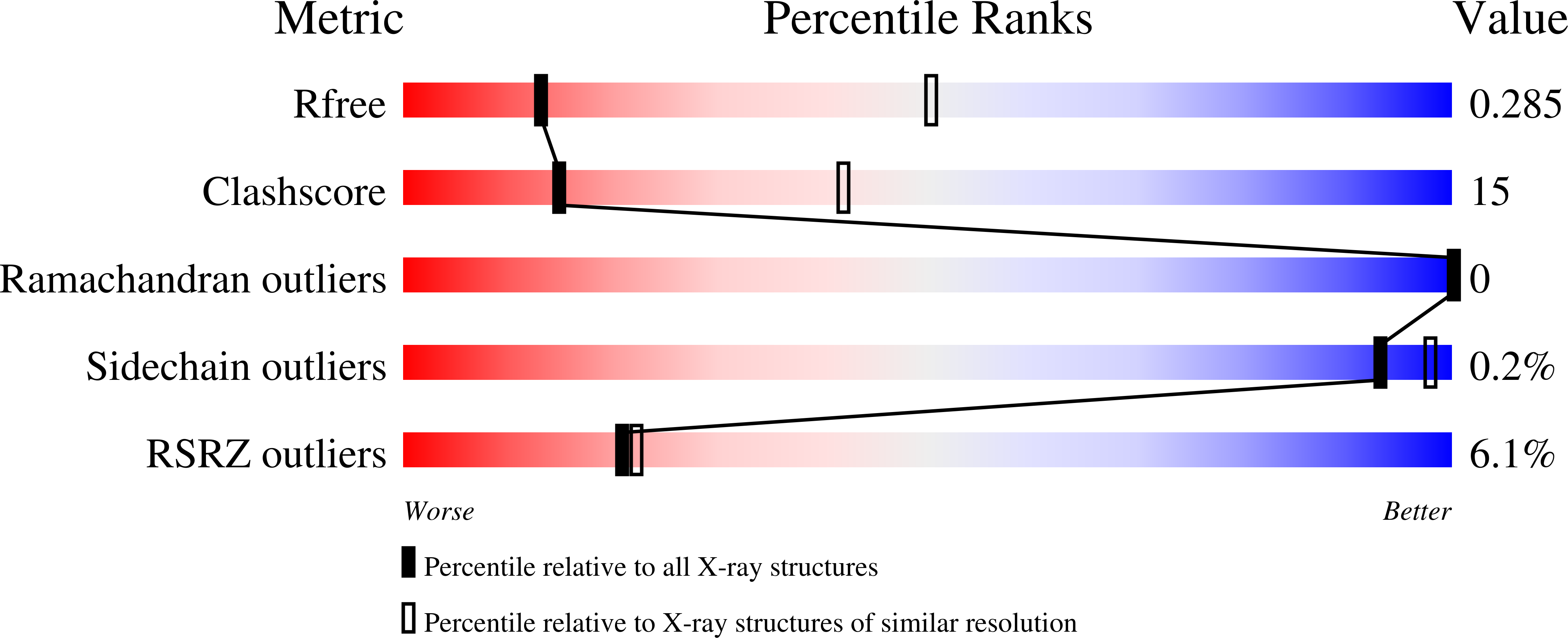Structural basis for germline antibody recognition of HIV-1 immunogens.
Scharf, L., West, A.P., Sievers, S.A., Chen, C., Jiang, S., Gao, H., Gray, M.D., McGuire, A.T., Scheid, J.F., Nussenzweig, M.C., Stamatatos, L., Bjorkman, P.J.(2016) Elife 5
- PubMed: 26997349
- DOI: https://doi.org/10.7554/eLife.13783
- Primary Citation of Related Structures:
5F7E, 5FA2, 5FEC, 5I9Q, 5IGX - PubMed Abstract:
Efforts to elicit broadly neutralizing antibodies (bNAbs) against HIV-1 require understanding germline bNAb recognition of HIV-1 envelope glycoprotein (Env). The VRC01-class bNAb family derived from the VH1-2*02 germline allele arose in multiple HIV-1-infected donors, yet targets the CD4-binding site on Env with common interactions. Modified forms of the 426c Env that activate germline-reverted B cell receptors are candidate immunogens for eliciting VRC01-class bNAbs. We present structures of germline-reverted VRC01-class bNAbs alone and complexed with 426c-based gp120 immunogens. Germline bNAb-426c gp120 complexes showed preservation of VRC01-class signature residues and gp120 contacts, but detectably different binding modes compared to mature bNAb-gp120 complexes. Unlike typical antibody-antigen interactions, VRC01-class germline antibodies exhibited preformed antigen-binding conformations for recognizing immunogens. Affinity maturation introduced substitutions increasing induced-fit recognition and electropositivity, potentially to accommodate negatively-charged complex-type N-glycans on gp120. These results provide general principles relevant to the unusual evolution of VRC01-class bNAbs and guidelines for structure-based immunogen design.
Organizational Affiliation:
Division of Biology and Biological Engineering, California Institute of Technology, Pasadena, United States.


















